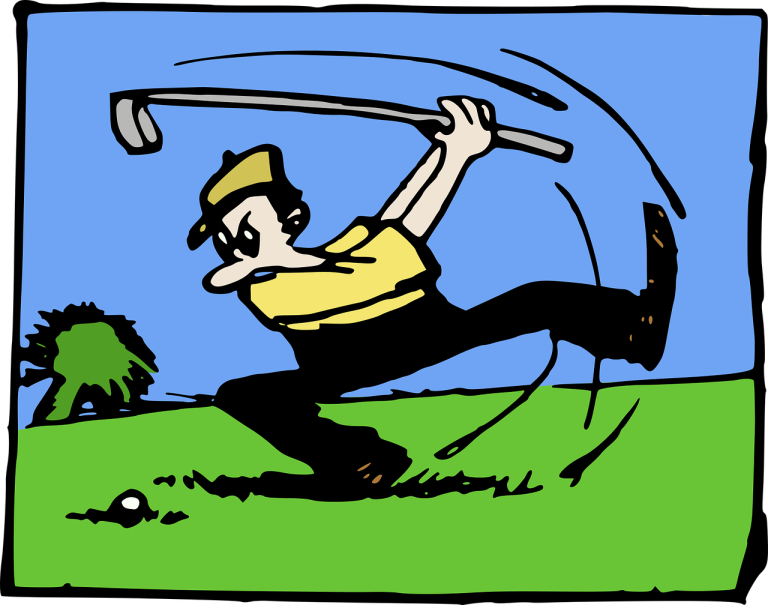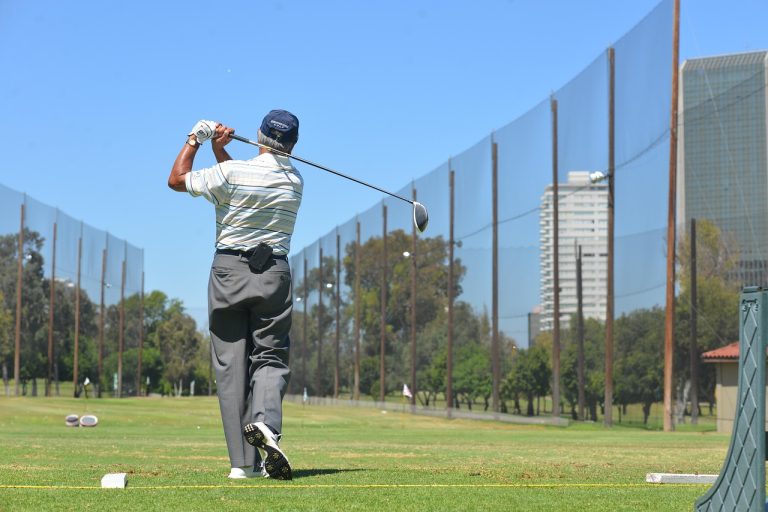Unlock Your Best Game with 5 Golf Swing Drills
Golfing Troop is reader supported. When you purchase using links on our website, we may earn an affiliate commission. Learn more.
Golf is more than just a game; it’s a journey of precision, skill, and personal growth. At the heart of this journey lies the golf swing—a crucial element that can make or break your performance on the course. A proper golf swing not only enhances your distance and accuracy but also builds confidence. Whether you’re a beginner learning the basics or an advanced player seeking to refine your technique, focusing on your swing is essential for unlocking your best game.
To help you elevate your golf experience, we’ve compiled five essential golf swing drills. These drills are designed to improve your golf swing by honing specific aspects of your technique. From grip adjustments to follow-through emphasis, each drill addresses a vital component that contributes to a successful swing. By incorporating these drills into your practice routine, you’ll develop muscle memory, enhance consistency, and ultimately enjoy the game even more. Ready to transform your swing? Let’s dive into these impactful drills that promise to take your game to the next level!
Understanding the Golf Swing
A successful golf swing is more than just a fluid motion; it’s a complex combination of mechanics that requires an understanding of key components such as stance, grip, posture, and follow-through. Each element plays a crucial role in ensuring that your swing is both powerful and accurate. For example, a proper stance provides a solid foundation, allowing for better balance and weight transfer throughout the swing. Similarly, having the right grip can significantly influence your control over the clubface, which is essential for achieving the desired ball flight. Mastering these components will form the bedrock of your swing mechanics and set you on the path to improvement.
Consistency is paramount in golf, where even the slightest variation in technique can lead to drastically different outcomes. This is why practicing with purpose using targeted golf swing drills can be incredibly beneficial. By focusing on specific aspects of your swing during practice drills, you can develop muscle memory that reinforces proper technique. Imagine a professional golfer who consistently hits their drives down the fairway; this level of accuracy comes not from luck but from countless hours spent refining their swing mechanics through repetitive practice. Incorporating drills into your routine can help you achieve a similar level of reliability on the course.
Moreover, understanding the mechanics of your swing allows you to identify areas for improvement. For instance, if you’re experiencing a slice, it may be due to improper grip or alignment rather than a lack of power. Knowing how each component interacts gives you the insight needed to make meaningful adjustments. It’s important to remember that even advanced players continually work on their fundamentals to maintain their performance. Therefore, embracing a mindset of ongoing learning and refinement will not only enhance your game but also deepen your enjoyment of golf as a lifelong pursuit.
In summary, grasping the key components of a successful golf swing while recognizing the importance of consistency and technique can dramatically improve your performance on the course. As you dive into the following drills, keep these foundational concepts in mind, and you’ll find that each practice session brings you closer to unlocking your best game.
Drill 1: The Grip Drill
Establishing the correct grip is fundamental to enhancing your golf performance, as it serves as the foundation for a successful swing. A proper grip allows for better control of the club, enabling you to execute shots with precision. To achieve the ideal grip, start by placing the club in your left hand (for right-handed golfers) so that it rests diagonally across your fingers and palm. Your thumb should fit snugly along the shaft without excessive tension. Next, position your right hand so that it overlaps or interlocks with your left, ensuring a unified hold on the club. This grip not only fosters stability but also promotes a natural swing motion.
Maintaining consistent grip pressure throughout your swing is crucial for optimizing performance. Many beginners inadvertently grip the club too tightly, which can lead to tension in the arms and shoulders, ultimately affecting swing mechanics. Instead, aim for a light to moderate grip pressure; think of holding a tube of toothpaste without squeezing out any product. This relaxed grip allows for a smoother swing arc and promotes fluidity in your movements. Pay attention to your grip during practice, consciously reminding yourself to maintain this pressure throughout your entire swing—from the takeaway to impact and follow-through.
Common mistakes can hinder your progress when it comes to grip. One frequent error is inconsistent hand placement; be mindful that your grip should feel comfortable yet secure each time you step up to hit a ball. Additionally, many golfers overlook the importance of grip size; using a grip that’s too thick or too thin can lead to discomfort and poor control. Take the time to experiment with different grip sizes during practice sessions to find what feels best for you. Remember, establishing a solid grip isn’t just about holding the club; it’s about creating a reliable connection that will support your overall game as you work through these beginner golf tips. By mastering this essential drill, you’ll lay the groundwork for improved consistency and confidence in your swing.
Drill 2: The Alignment Drill
Proper alignment is a fundamental aspect of a successful golf swing that often gets overlooked. Without the right setup, even the most technically sound swing can result in wayward shots. To set yourself up for success, it’s essential to understand how your body should align with your target line. A common mistake is assuming that alignment is solely about positioning the feet; however, it also involves aligning the shoulders and hips parallel to the intended target. This comprehensive approach ensures that every part of your body is working in harmony, which is crucial for achieving consistent results.
One effective way to practice alignment is by using alignment sticks or other tools. These can be placed on the ground to create visual guides that help you maintain the correct stance and posture throughout your practice sessions. For instance, you can position one stick along your target line while standing behind the ball, ensuring that your feet, hips, and shoulders are all parallel to it. This method not only enhances your awareness of alignment but also builds confidence as you learn to trust your setup. In advanced golf training, this visual feedback can be invaluable in refining your swing and improving overall accuracy.
The benefits of consistent alignment cannot be overstated. When you regularly incorporate this drill into your practice routine, you’ll find that your shots become more predictable and straighter. This consistency reduces the likelihood of mis-hits and enhances your ability to control the ball’s direction. Moreover, a solid alignment helps in developing muscle memory, allowing you to instinctively set up correctly each time you step onto the course. As you refine your swing through these alignment drills, you’ll gain not only technical proficiency but also an increased sense of comfort and confidence in your game.
By focusing on this key element of your golf swing, you’re laying a strong foundation for success in all aspects of your game. Remember, even the best golfers prioritize their alignment during practice. So, take the time to work on this drill, and watch as your performance improves on the course.
Drill 3: The Slow Motion Drill
The Slow Motion Drill is a powerful tool for golfers looking to refine their swing mechanics and elevate their golfing skills. By practicing your swings at a reduced speed, you can focus intently on each segment of your motion—from your takeaway to your follow-through. This deliberate approach allows you to identify any flaws or inconsistencies in your technique that might go unnoticed during a standard practice session. As you slow down your swing, you’ll gain greater awareness of how every part of your body works together, leading to a more harmonious and effective overall motion.
When performing the Slow Motion Drill, pay close attention to the transition between different phases of the swing. For instance, as you transition from the backswing to the downswing, notice how your hips initiate the movement. Ensure that your shoulders and arms follow in sync to maintain a smooth flow. This drill encourages you to isolate each segment of the swing, allowing you to make conscious adjustments to improve your form. Over time, these small corrections can lead to significant enhancements in your on-course performance.
Another key benefit of the Slow Motion Drill is its impact on muscle memory development. By repeatedly executing each part of your swing in slow motion, you train your muscles to remember the correct movements. This is particularly beneficial when it comes time to execute your swing in a high-pressure situation on the course. The more familiar your body becomes with the proper mechanics, the less likely you are to revert to bad habits during a round. As a result, this drill not only sharpens your technique but also boosts your confidence when stepping up to the tee.
Incorporating the Slow Motion Drill into your practice routine can be a game changer for golfers at any skill level. Whether you’re just starting out or have years of experience under your belt, taking the time to slow down and focus on mechanics will yield long-term benefits. So, next time you’re at the range, dedicate a portion of your session to this drill; you’ll be surprised at how much clarity it brings to your swing and how it enhances your overall golfing prowess.
Drill 4: The Impact Bag Drill
The Impact Bag Drill is a fantastic tool for golfers looking to improve their understanding of the moment of contact during their swing. By utilizing an impact bag, which is essentially a sturdy, padded bag that simulates the feel of striking a golf ball, players can focus on the critical part of their swing where precision and power come together. This drill allows you to visually and physically feel what proper impact should be like, enabling you to make necessary adjustments to your technique.
One of the key aspects this drill emphasizes is the importance of proper weight transfer during impact. Many golfers struggle with maintaining balance and shifting their weight correctly from their back foot to their front foot. When you hit the impact bag, it’s essential to practice this movement deliberately. As you swing through the bag, concentrate on how your weight shifts and ensure that your body moves in harmony with your arms. This not only enhances your ability to generate power but also significantly improves accuracy, as a well-timed weight transfer can lead to more consistent strikes.
To maximize both power and accuracy while using the impact bag, focus on your grip and stance. Ensure that your grip pressure remains firm but relaxed, allowing for a fluid motion through the bag. Additionally, pay attention to your posture; a stable base with slightly bent knees will help you maintain balance throughout the swing. As you progress through this drill, keep track of how different adjustments affect your contact with the bag, and don’t hesitate to experiment with various swing speeds to find your optimal rhythm.
Incorporating the Impact Bag Drill into your practice routine can yield significant benefits for your golf game. Not only does it sharpen your understanding of the mechanics of impact, but it also builds muscle memory that translates to improved performance on the course. So grab an impact bag, get out there, and start refining your swing with this essential drill—your future self will thank you!
Drill 5: The Follow-Through Drill
A powerful golf swing doesn’t end when the club strikes the ball; it continues through a complete follow-through. This essential part of the swing is often overlooked, yet it plays a crucial role in achieving both accuracy and distance. A well-executed follow-through not only signifies that you’ve made solid contact with the ball but also helps to maintain balance and stability throughout your swing. Practicing the follow-through ensures that your body remains aligned and that you are finishing in a strong position, ready for your next shot.
To ensure an effective follow-through, begin by focusing on your balance. After making contact with the ball, allow your body to naturally flow into the follow-through position. Your weight should shift onto your front foot, and your back foot should pivot, allowing your hips and shoulders to rotate fully. A helpful technique is to visualize yourself finishing in a pose similar to a professional golfer, with your chest facing the target and your arms extended high above your head. This imagery can reinforce the importance of maintaining balance while ensuring that your body is in the right position at the end of your swing.
Moreover, consider incorporating drills that emphasize the follow-through. For instance, practice taking swings without a ball, focusing solely on the finish position. Hold your finish for a few seconds after each swing to build muscle memory and develop the habit of completing your swing. You can even challenge yourself by swinging with your eyes closed, which forces you to rely on feel rather than sight, enhancing your awareness of balance and alignment throughout your swing.
Ultimately, the follow-through is not just about how you finish; it’s an extension of your entire swing mechanics. A strong follow-through can help you achieve better trajectory and distance while minimizing errors in your shots. By dedicating time to perfecting this aspect of your game, you’ll find that it positively influences your overall performance on the course. Remember, every great golfer you admire has mastered their follow-through, so make it a priority in your practice routine, and watch as your confidence and results improve.
Incorporating Drills into Your Practice Routine
Integrating golf swing drills into your regular practice sessions is essential for maximizing your improvement on the course. To get started, consider dedicating a portion of each practice session specifically to these drills. For instance, you might allocate the first 30 minutes to focus solely on the Grip Drill and Alignment Drill, allowing you to establish a solid foundation before moving on to full swings. By breaking down your practice into targeted segments, you can ensure that you’re consistently working on critical aspects of your swing while also keeping your sessions engaging and productive.
Consistency and patience are key when it comes to improving your golf game through these drills. It’s important to remember that progress might not be immediately visible, but with regular practice, small improvements will accumulate over time. Try to incorporate these drills into your routine at least two to three times a week, gradually increasing the complexity as you become more comfortable with each element. For example, once you’ve mastered the Slow Motion Drill, you can challenge yourself by incorporating it into your longer practice sessions or even during a round of golf. This way, you’re not only practicing the mechanics but also adapting them under pressure.
Tracking your progress can also serve as a significant motivational tool. Consider keeping a journal or using an app to log your practice sessions and any improvements you notice in your swing performance. You might write down specific aspects of your drills, such as how your grip feels or the quality of your follow-through. Over time, reviewing this record will provide tangible evidence of your growth and highlight areas that may need additional focus. Celebrating these small victories—whether it’s hitting a straighter drive or feeling more balanced in your follow-through—can keep your spirits high and fuel your enthusiasm for the game.
Ultimately, incorporating golf swing drills into your practice routine is about creating a structured yet flexible approach to improvement. By focusing on consistency, being patient with yourself, and tracking your progress, you’ll not only enhance your skills but also cultivate a deeper appreciation for the game itself. Embrace the journey, and remember that every swing you take brings you one step closer to unlocking your best game.
Final Thoughts on Your Golf Journey
Practicing these golf swing drills can greatly enhance your game. Each drill targets essential aspects of your swing, helping you build a solid foundation. By focusing on your grip, alignment, mechanics, impact, and follow-through, you’ll see improvements in both consistency and accuracy. These drills are not just exercises; they are stepping stones to unlocking your best performance on the course.
Commit to regular practice. Improvement takes time and patience, but the rewards are worth it. Enjoy every moment of your journey in mastering your golf game. Celebrate the small victories along the way, and remember that every golfer started where you are now. With dedication and these effective golf swing drills, you’ll be well on your way to achieving your golfing goals.







